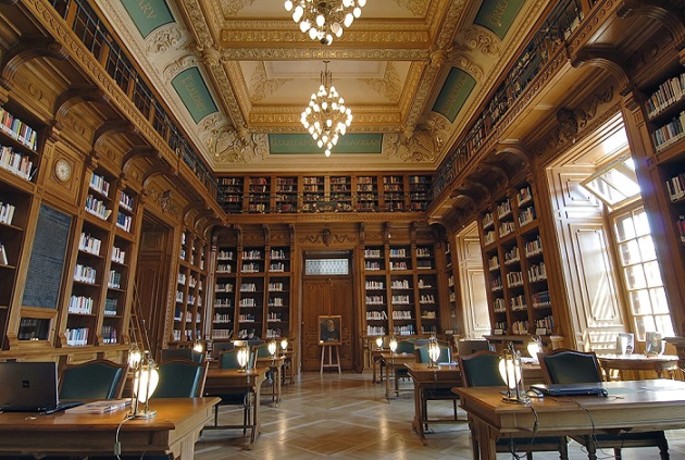King Carol I, the first king of Romania, addressed a letter to Prime Minister Lascăr Catargiu, on May 3, 1892, expressing his desire to create a space for a national library dedicated to young university students.
The building plans were elaborated by the architect Paul Gottereau, as early as 1891, and the foundation stone was laid in the presence of the King on August 15, 1891. The construction of the building lasted two years, to which were added two more years for finishing works and equipment.
From an architectural point of view, the refined lines characteristic of the Louis XVI style can be noticed, but without decorative excesses, the only exterior details are those representing vegetal ornaments. Interior design and furniture brought from abroad are characterized by a similar refinement.
In 1900, King Carol I decided to expand the building, by adding a new body, according to the plans of the same architect, Paul Gottereau, the new building was put into service in 1914.
Spiru Haret, the then Minister of Public Instruction, considered the building to be "the most beautiful cultural institution in the country".
Vasile Alecsandri's daughter, Maria Bogdan, has confessed in 1920 about this space: "A royal gift made by a king of great intelligence, who knew how to gather a part of the nation around greater ideas and higher interests than those of eternal politics".
The library was located upstairs, while on the ground floor, according to the King's will, there were rented shops that provided a constant income, necessary for the proper functioning of the institution.
After 1990, the building was rehabilitated to repair the damage caused during the 1989 Revolution, and a new, modern building was added to complete the old building in a perfect match.
Since May 2006, the library is named Carol I Central University Library. A place ennobled by history, culture and beauty, a place of peace and reading, worth visiting and admiring.
Sources:
http://www.romaniaregala.ro/atitudini/palatul-fundatiei-universitare-carol-i/

























